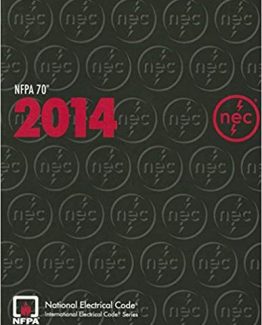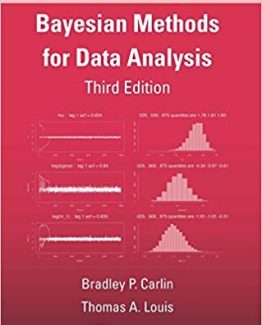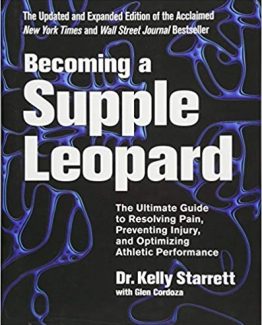Essential Fish Biology: Diversity, Structure, and Function by Derek Burton, ISBN-13: 978-0198785569
[PDF eBook eTextbook] – Available Instantly
- Publisher: Oxford University Press; Illustrated edition (December 5, 2017)
- Language: English
- 416 pages
- ISBN-10: 0198785569
- ISBN-13: 978-0198785569
Essential Fish Biology provides an introductory overview of the functional biology of fish and how this may be affected by the widely contrasting habitat conditions within the aquatic environment. It describes the recent advances in comparative animal physiology which have greatly influenced our understanding of fish function as well as generating questions that have yet to be resolved.
Fish taxa represent the largest number of vertebrates, with over 25,000 extant species. However, much of our knowledge, apart from taxonomy and habitat descriptions, has been based on relatively few of them, usually those which live in fresh water and/or are of commercial interest. Unfortunately there has also been a tendency to base our interpretation of fish physiology on that of mammalian systems, as well as to rely on a few type species of fish. This accessible textbook will redress the balance by using examples of fish from a wide range of species and habitats, emphasizing diversity as well as recognizing shared attributes with other vertebrates.
Table of Contents:
Contents
Plates
1 Fish diversity
1.1 Summary
1.2 Introduction
1.3 Classification
1.3.1 Jawless fish
1.3.2 Jawed fish
1.3.3 Class Chondrichthyes and Class Osteichthyes
1.3.4 Class Sarcopterygii
1.3.5 Class Actinopterygii
1.3.6 The relict fish
1.3.7 Teleosts
1.3.8 Teleost classification
1.4 Variety in fish structure and function
1.4.1 Diversity in size and longevity
1.4.2 Diversity in habitat
1.4.3 Diversity in shape
1.4.4 Diversity in colour
1.4.5 Diversity in numbers
Appendix
1.1 The embryonic layers of animals
1.2 A summary of fish classification systems (jawed fish only)
1.3 Examples of confusion in the use of common names
1.4 Further conventions and explanations in the use of naming taxonomy
1.5 The concept of persistence of larval traits in an animal which is sexually mature
Bibliography
2 The integument
2.1 Summary
2.2 Introduction
2.3 Fish skin structure
2.3.1 Epidermis
2.3.2 Dermis
2.3.3 Hypodermis
2.4 Fish scales
2.5 Bony plates and scutes
2.6 Skin colour
2.6.1 The physical basis for colour: chromatophores
2.6.2 Dark colouration
2.6.3 Red, orange and yellow colouration
2.6.4 Blue and green colouration
2.6.5 Silver and white colouration
2.7 Habitat and colour
2.8 Abnormal skin colour
2.9 Colour change
2.10 Skin variability
2.11 Skin responses to heat and cold
Appendix
2.1 Some pattern types in reef fish
2.2 Colour and pattern in a flatfish, winter flounder
2.3 Autonomic control of melanophores in winter flounder
Bibliography
3 The skeleton, support and movement
3.1 Summary
3.2 Introduction
3.3 Cartilage and bone
3.4 The exoskeleton
3.5 The endoskeleton
3.5.1 The axial skeleton
3.5.2 Vertebrae
3.5.3 The skull
3.5.4 Jaws and the branchial skeleton
3.5.5 The appendicular skeleton
3.5.6 Median fin support
3.5.7 Fin-ray supports
3.5.8 Fin adjustment
3.5.9 The adipose fin
3.5.10 Caudal fin support
3.6 Trends in the fish skeleton
3.7 Articulation of the skeleton
3.7.1 Joints
3.8 Locomotion
3.8.1 Skeletal (striated) muscles
3.8.2 Types of fish locomotion
3.8.3 Fast-start
3.8.4 Steering, braking and stabilizers
3.8.5 Buoyancy
3.8.6 Fish shape and swimming
3.8.7 Movement out of water
Appendix
3.1 The hydrostatic skeleton
3.2 Histochemical differentiation of cartilage and bone
3.3 The origin of bony skeletons: conodonts
3.4 Individual bones and their approximate position
Bibliography
4 Food procurement and processing
4.1 Summary
4.2 Introduction
4.3 Food and feeding
4.3.1 Catching prey
4.3.2 Piscivory, prey retention and prey defenses
4.3.3 Plankton feeders, microcarnivores and picking and scraping
4.3.4 Specialized diets, fin-biters, parasitism and cannibalism
4.4 The food-processing system
4.4.1 Mouth
4.4.2 Jaws
4.4.3 Pharyngeal jaws and the tooth-bite apparatus
4.4.4 Lips
4.4.5 Teeth
4.4.6 The gut
4.4.7 Digestion and digestive enzymes
4.4.8 Absorption
4.4.9 Egestion
4.5 Feeding periodicity
4.6 The control of feeding behaviour
4.7 Gut activity and its control
4.8 Temperature and feeding
4.9 Fish nutrition
Appendix
4.1 Nutritional requirements for fish
Bibliography
5 Transport: blood and circulation
5.1 Summary
5.2 Introduction
5.3 Overview of the fish vascular system
5.4 The basic circulation for gill-breathing fish
5.5 The heart
5.5.1 Heart valves
5.5.2 Septation
5.5.3 Cardiac muscle
5.5.4 Ventricle wall composition
5.5.5 The pacemaker
5.5.6 The pericardium
5.6 Blood pressure
5.7 Venous return
5.8 The circulation in air-breathing fish
5.9 Portal systems
5.10 Retia
5.11 The secondary circulation
5.12 Change in the circulation
5.13 Blood
5.13.1 Red blood cells (erythrocytes)
5.13.2 White blood cells (leucocytes)
5.13.3 Plasma
5.13.4 Coagulation
5.13.5 Osmotic fragility
5.13.6 Blood-cell replenishment, recycling and haematopoiesis
5.14 The spleen
5.15 The thymus
5.16 The immune system
5.17 Conclusion
Appendix
5.1 Conventional units for blood system measurements
5.2 Blood-sampling techniques
Bibliography
6 Gas exchange
6.1 Summary
6.2 Introduction
6.3 Major gases exchanged by fish
6.4 The gas-exchange surface
6.5 Gills
6.5.1 Gill filaments: primary and secondary lamellae
6.5.2 The pharyngeal clefts
6.5.3 Spiracle and pseudobranch
6.5.4 Fine structure of the gills
6.5.5 Blood supply
6.5.6 Countercurrent flow
6.5.7 Oxygen gain and carbon dioxide loss
6.5.8 Respiratory pigments, haemoglobin and myoglobin
6.5.9 Gill area
6.5.10 Ventilation mechanisms and control
6.5.11 Ram ventilation
6.6 Air-breathing fish
6.6.1 Lungs
6.6.2 The swim bladder used for respiration
6.6.3 The gut used for respiration
6.6.4 The lips used for respiration
6.6.5 The skin used for respiration
6.6.6 Facultative and obligate air-breathers
6.7 Problems with oxygen and carbon dioxide levels in the aqueous environment
6.7.1 Hypoxia and hypercapnia
6.7.2 Supersaturation
6.7.3 High oxygen demand
Appendix
6.1 Oxygen availability
Bibliography
7 Metabolism, homeostasis and growth
7.1 Summary
7.2 Introduction
7.3 Fish metabolism
7.4 Temperature and metabolism
7.5 Homeostasis and relations with the aquatic environment
7.5.1 The marine environment
7.5.2 The freshwater environment
7.5.3 Acid-base regulation
7.5.4 The effects of different salinities and osmotic movement of water
7.5.5 Fish and osmosis
7.5.6 Aquaporins: a route for water movement?
7.5.7 Plasma regulation and the erythrocytes
7.5.8 Osmoconformers and osmoregulators
7.5.9 Osmolytes and counteraction
7.5.10 Marine teleosts and osmoregulation
7.5.11 The coelacanths’ osmotic relations
7.5.12 Freshwater fish and osmoregulation
7.6 Mechanisms for water and ionic regulation in freshwater fish
7.7 Chloride cells
7.8 Marine chondrichthyans and ionic regulation
7.9 Euryhaline and stenohaline fish
7.10 Control of osmoregulation
7.11 The liver
7.12 Energy storage
7.12.1 Carbohydrates
7.12.2 Lipids
7.12.3 Muscle
7.13 Growth
7.13.1 The growth potential of individuals
7.13.2 Control of growth
7.13.3 Growth rate
7.13.4 Size measurements
7.13.5 Fish ages
7.14 Conclusion
Appendix
7.1 Buffers
7.2 The use of artificial media post-hypophysectomy
7.3 Fish salines
7.4 Jellied muscle
Bibliography
8 Excretion
8.1 Summary
8.2 Introduction
8.3 Pathways for excretion
8.3.1 Amino acids
8.3.2 Ureotely and ammonotely
8.3.3 Creatine
8.3.4 Haemoglobin
8.3.5 Steroids
8.3.6 Water
8.3.7 Inorganic ions
8.3.8 Particulate materials
8.3.9 Metals
8.3.10 Xenobiotics
8.4 Sites for excretion
8.4.1 The gill surface
8.4.2 The skin
8.4.3 Excretion via the liver, bile and intestine
8.4.4 The rectal gland
8.4.5 The kidney
8.5 The structure and function of the fish kidney
8.5.1 Kidney microstructure
8.5.2 The nephron
8.5.3 Nephron function
8.5.4 The aglomerular kidney
8.6 Verifying regulation of, and pathways for, excretion
8.7 The control/regulation of excretion
Bibliography
9 Reproduction
9.1 Summary
9.2 Introduction
9.3 Sexual dimorphism
9.4 Hermaphroditism, sex determination and manipulation
9.5 The male reproductive system
9.5.1 Testis microstructure
9.5.2 Spermiation and spawning
9.6 The female reproductive system
9.6.1 Vivipary, ovovivipary and ovipary
9.7 Genital pores
9.8 Gametogenesis
9.9 Spermatogenesis
9.9.1 Different types of spermatogenesis
9.9.2 Spermatogonia and mitosis
9.9.3 Spermatocytes and meiosis
9.9.4 Spermatids and sperm formation: spermiogenesis
9.10 Oogenesis
9.10.1 Stages of oogenesis
9.10.2 Vitellogenesis: yolk formation
9.10.3 Layers around developing oocytes
9.10.4 The egg membrane or chorion
9.10.5 Synchrony or asynchrony in oogenesis
9.10.6 Fecundity and atresia
9.10.7 Terminal phases of oogenesis
9.10.8 Ovulation
9.10.9 Egg structure
9.11 Fertilization
9.12 Egg and larval development
9.13 Post-reproduction
9.14 Reproductive migrations and reproductive mortality
9.15 Spawning and reproductive patterns
9.16 Reproductive omission: skipped spawning
9.17 Reproductive success
9.18 Factors controlling or influencing reproduction
Appendix
9.1 Staging systems for fish reproduction
9.2 Families with mouth-brooding
9.3 Steroids known to be or possibly involved in fish reproduction
9.4 The concept of degree days
9.5 Fluids for egg treatment
9.6 Staining sections with haematoxylin and eosin
9.7 Cell division
Bibliography
10 Integration and control: hormones
10.1 Summary
10.2 Introduction
10.3 Hormone nomenclature and classification
10.4 The chemical structure of hormones
10.5 Hormone candidates
10.6 Characteristics of hormone control
10.7 Fish hormones in relation to mammalian hormones
10.8 Stored and bound hormones, prohormones
10.9 Neurosecretion
10.10 Interaction of hormones with their targets
10.11 Endocrine organs, glands, tissues and cells
10.11.1 The pituitary gland and hypothalamus
10.11.2 The pineal organ
10.11.3 The adrenal gland homologues
10.11.4 The thyroid gland
10.11.5 The gonads
10.11.6 The urohypophysis
10.11.7 The gut and pancreas
10.11.8 Corpuscles of Stannius
10.11.9 Ultimobranchial organs, bodies or glands
10.12 Endocrine roles in controlling specific functions
10.12.1 Hormones and homeostasis
10.12.2 Hormones and reproduction
10.12.3 Hormones and growth
10.12.4 Hormones and digestion
10.12.5 Hormones and appetite
10.12.6 Hormones and the vascular system
10.12.7 Hormones and stress
10.12.8 Hormones and colour change
10.13 Overview
Appendix
10.1 Localization of endocrine cells
10.2 Hormone acronyms
Bibliography
11 Integration and control: the nervous system
11.1 Summary
11.2 Introduction
11.3 Neural cells
11.3.1 Neuroglia
11.3.2 Neurons
11.3.3 The neuron membrane and conduction
11.3.4 Synapses
11.3.5 Myelination
11.3.6 The neuropil
11.4 Antagonistic control
11.5 The organization of the fish nervous system
11.6 The central nervous system
11.6.1 The meninges
11.6.2 The organization of the brain
11.6.3 The ventricles and cerebro-spinal fluid
11.6.4 The blood–brain barrier
11.6.5 Brain size and complexity
11.6.6 The spinal cord
11.6.7 The posterior spinal cord
11.7 The peripheral nervous system
11.8 The spinal and cranial nerves
11.8.1 The terminal nerve (nerve zero)
11.9 The autonomic nervous system
11.9.1 The spinal autonomic system
11.9.2 The cranial autonomic system
11.9.3 The enteric autonomic system
11.9.4 Neurotransmitters and receptors in the autonomic nervous system
11.10 Individual effector control systems
11.10.1 The gut
11.10.2 Spleen, pancreas and rectal gland
11.10.3 Urinogenital system
11.10.4 Swim bladder
11.10.5 The cardiovascular system
11.10.6 Skin colour change
11.10.7 Pupillary size changes
11.11 Learned behaviour
11.12 Overview
Appendix
11.1 Excitable membranes
11.2 Neural control of muscles
Bibliography
12 Perception and sensation
12.1 Summary
12.2 Introduction
12.3 Photoreceptors: vision
12.3.1 The pineal
12.3.2 The eyes
12.3.3 The eyeball optical system: biocamera
12.3.4 Eyeball movement
12.3.5 Eyeball structure
12.3.6 The iris and pupil
12.3.7 Image formation
12.3.8 Optical system adaptations to habitat
12.3.9 The retina and its neuronal circuitry
12.3.10 Retinal photoreceptors: rods and cones
12.3.11 Retinal photomechanical activity
12.3.12 Retinal specializations
12.3.13 Perception of polarized light
12.4 Chemoreceptors: taste, smell and internal stimuli
12.4.1 Chemosensory cells
12.4.2 Taste (gustation)
12.4.3 Location and neural connections of taste receptor cells
12.4.4 Gustatory stimuli
12.4.5 Smell (olfaction)
12.4.6 The olfactory system
12.4.7 The olfactory bulbs
12.4.8 Olfactory stimuli
12.5 Mechanoreceptors: introduction
12.5.1 Merkel cells
12.5.2 Baroreceptors
12.5.3 Proprioceptors
12.6 Water movement perception and equilibrium systems
12.7 The lateral line system: perception of low-frequency vibration
12.7.1 Neuromasts and neural connections
12.7.2 Neuromast function
12.8 The ear: hearing and gravity perception
12.8.1 Semicircular canals
12.8.2 Otolith organs
12.8.3 Semicircular canal and otolith organ functions
12.8.4 Direct and indirect sound transmission
12.8.5 Hearing in vocally communicating fish
12.9 Detecting electric fields and discharges
12.9.1 Electrolocation
12.9.2 Electroreceptors
12.9.3 Types of electroreceptors
12.9.4 Electric organ discharge variation
12.9.5 Jamming avoidance
12.10 Magnetoreceptors
12.11 Nociceptors and thermoreceptors
12.12 Overview
Bibliography
13 Special adaptations
13.1 Summary
13.2 Introduction
13.3 Special adaptations linked to habitat: warm, shallow water
13.3.1 Cichlids
13.3.2 Characoids
13.3.3 Coral reef fish
13.4 Special adaptations linked to habitat: cold, deep-water systems
13.4.1 Lakes
13.4.2 The deep sea
13.4.3 Deep-sea taxa
13.4.4 Anglerfish
13.4.5 Hydrothermal vents and occasional visitors
13.4.6 The colour of deep-sea fish
13.4.7 Bioluminescence
13.5 Limited habitats
13.5.1 Cavefish
13.5.2 Desert springs
13.5.3 Polar fish
13.5.4 Temporary pools
13.5.5 Terrestrial fish
13.5.6 Burrowing
13.6 Fish communication
13.7 Sound production
13.8 Electric fish
13.8.1 Bioelectrogenesis
13.8.2 How is self-electrocution prevented?
13.9 Defence
13.10 Special adaptations linked to morphology
13.10.1 Fin shapes and modifications
13.10.2 Fish shape
13.11 Special adaptations: positional
13.12 Hermaphroditism and polymorphism
13.13 Symbioses
13.14 Conclusion
Appendix
13.1 Anemone fish and nematocysts
Bibliography
14 Fish behaviour
14.1 Summary
14.2 Introduction
14.3 Neural pathways and behaviour
14.4 Learning, memory and play
14.5 Behaviour centred on movement
14.5.1 Motile activity
14.5.2 Pelagic fish
14.5.3 Feeding
14.5.4 Torpor and sleep
14.5.5 Territoriality
14.5.6 Migration
14.6 Social behaviour
14.6.1 Fish aggregations
14.7 Chemoreception and pheromones in fish behaviour
14.8 Reproductive behaviours
14.8.1 Mate location
14.8.2 Courtship
14.8.3 Fertilization
14.8.4 Egg transfer
14.8.5 Nest-building
14.8.6 Parental care
14.9 Recognition
14.9.1 Kin recognition
14.9.2 Interspecific communication: cleanerfish
14.10 Innate behaviour
14.10.1 Colour, crypsis and mimicry
14.10.2 Ventilation
14.11 Fish behaviours and humans
14.11.1 Do fish experience pain?
14.12 Temperature sensitivity
14.13 Habitat and behaviour
14.14 Overview
Appendix
14.1 Neurotransmitters and behaviour
Bibliography
15 Obtaining information
15.1 Summary
15.2 Introduction
15.3 Choosing fish to study
15.4 Sources of background information
15.4.1 Reports
15.4.2 Refereed journals
15.4.3 Scientific (specialist) meetings
15.4.4 Books
15.4.5 Language of communication
15.5 Species studied
15.5.1 Publications
15.5.2 Reference works
15.6 Type fish
15.6.1 Dogfish
15.6.2 Sticklebacks
15.6.3 Goldfish
15.6.4 Zebrafish
15.6.5 Salmonids
15.6.6 Gadids
15.6.7 Perch
15.6.8 Flatfish
15.7 Fish habitat and availability/suitability for study
15.8 Captive fish and sources
15.9 Conclusion
Appendix
15.1 Examples of Latin and Greek basics for biological use
16 Conservation and fish function
16.1 Summary
16.2 Introduction
16.3 Conservation physiology
16.4 Abundance
16.5 Extinction
16.6 The physiology of pollution
16.6.1 Thermal pollution
16.6.2 Chemical pollution
16.6.3 Eutrophication
16.7 Habitat destruction
16.8 Rehabilitation
16.9 Disease
16.10 Fishing
16.10.1 The ‘wild’ fishery
16.10.2 Problems with the wild fishery
16.10.3 Fish farming versus the wild fishery
16.10.4 Shark-fin fishery
16.10.5 Non-endemics
16.10.6 Catch and post-catch handling
16.11 Conservation and the fisheries
16.11.1 Marine protected areas (MPAs)
16.11.2 Predictability of fish numbers
16.12 Responsibility: the tragedy of the commons
16.13 The role of physiology in conservation
16.13.1 Reproductive capacity
16.13.2 Temperature changes
16.14 Conclusion
Appendix
16.1 Compensation and depensation
16.2 Categories of vulnerability
16.3 The turbot war
Bibliography
Glossary
References
Index
What makes us different?
• Instant Download
• Always Competitive Pricing
• 100% Privacy
• FREE Sample Available
• 24-7 LIVE Customer Support






Reviews
There are no reviews yet.